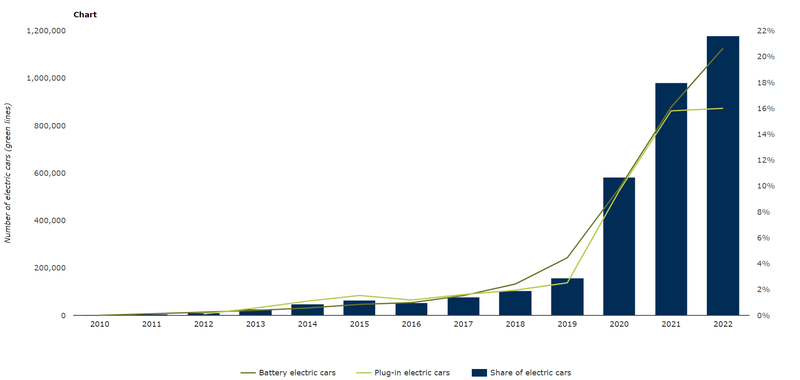All official European Union website addresses are in the europa.eu domain.
See all EU institutions and bodiesIn recent years, cleaner road vehicles and fuels have become progressively more available, yet the sector’s impacts on human health, the environment and climate change are persistent. A fundamental shift toward sustainability is needed in the way we move people and goods.
Millions of cars, vans, trucks and buses move people and goods around on Europe's extensive road transport infrastructure. Despite a shift towards electric vehicles in recent years, most vehicles in the EU still rely on petrol and diesel, which release air pollutants that harm our health and greenhouse gases emissions that contribute to climate change. Transport contributes to about a quarter of the EU's greenhouse gas emissions. Three-quarters of these come from road transport.
Noise pollution is also a severe and often under-reported health impact for those living or working close to major roads. A growing reliance on road transport and expansion in road networks impacts biodiversity by shrinking and separating natural areas and limiting the ability of wildlife to move and migrate.
Moreover, our roadways are getting busier and more congested. Our latest transport and environment report shows that transport sector’s transition towards sustainability is made difficult by the increasing transport demand and sluggish growth in sustainable transport modes for moving both people and freight.
At the same time, the EU transport sector has succeeded in significantly reducing emissions of most air pollutants with policy measures, such as tighter emission standards, and technological development. A significant share of this progress is due to reduced emissions in road transport.
Electric cars, efficient engines and cleaner fuels will fall short of mitigating all the negative impacts of road transport. A sustainable road transport can only be achieved within a sustainable mobility system, with a focus on public transport and greener modes of transport, such as rail or cycling.

Road transport shows no sign of slowing down
Private cars are the dominant mode of passenger transport in Europe. In 2022, cars accounted for almost three quarters (73%) of passenger-kilometres travelled in the EU, and kilometres driven by car increased by 25% from 1995 to 2022. Meanwhile, the use of more sustainable public transport modes — buses, trams, metros — has remained stable.
Road transport is also the main mode of freight transport, accounting for just over half of total freight in the EU in 2022. Moreover, the absolute volume of freight transport on Europe’s roads has increased by almost two thirds since 1995.
Both passenger and freight transport are expected to increase in the EU in coming years with road transport maintaining its dominant position for the foreseeable future.
More electric vehicles on the road
Electric vehicles play a massive role in reducing transport tailpipe emissions and meeting the goals defined in the European Green Deal.
Considerable progress in the uptake of electric cars and vans in the EU was made in 2022, with 21.6% of new car registrations being electric vehicles. Totalling close to two million electric car registrations in one year, up from 1,74 million in 2021.
The number of electric vans on European roads also continued to grow, reaching a share of 5.5% of new registrations in 2022.
In the last year, the number of newly registered battery electric vehicles increased by 25% while the number of plug-in hybrid cars remained stable. Battery electric vehicles accounted for the vast majority of electric vans registrations in 2022.
To aid the transition to electric vehicle use, the EU aims to have one million public charging points available to residents by 2025.

Source: EEA, 2023

Note: Red areas indicate where the ground sank compared to the measurements from the year before.
What can Copernicus data tell us?
Roads are built on land and the ground under our feet might not be as solid as we think. In fact, the ground can move many centimetres per year; it can sink or rise, due to for example subsidence, landslides or human activity.
Within the Copernicus Land Monitoring Service, the European Ground Motion Service (EGMS) provides detailed information on such surface movement.
EGMS data can be used to monitor the displacement of critical transport infrastructure such as roads, tunnels, and bridges. This results in more effective maintenance and prevention of roadblocks or traffic jams.
